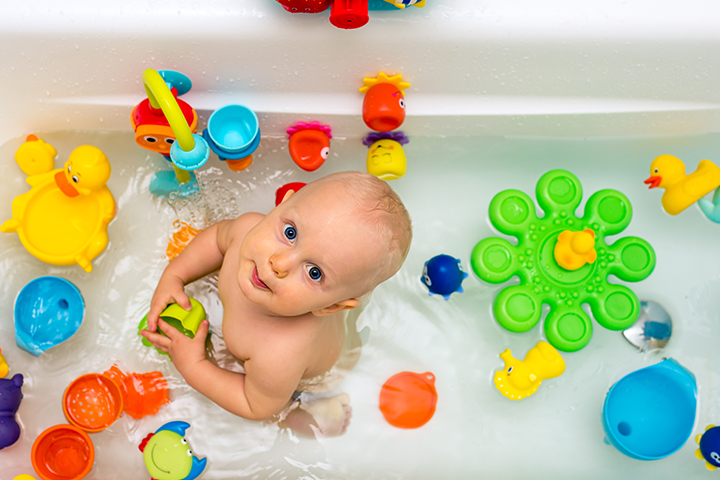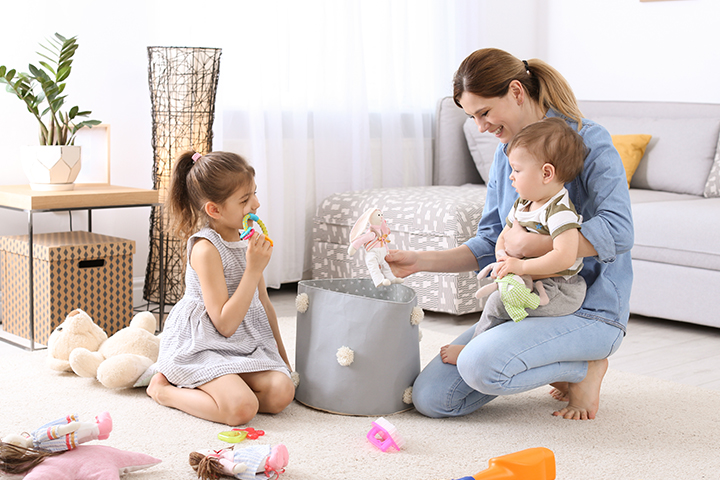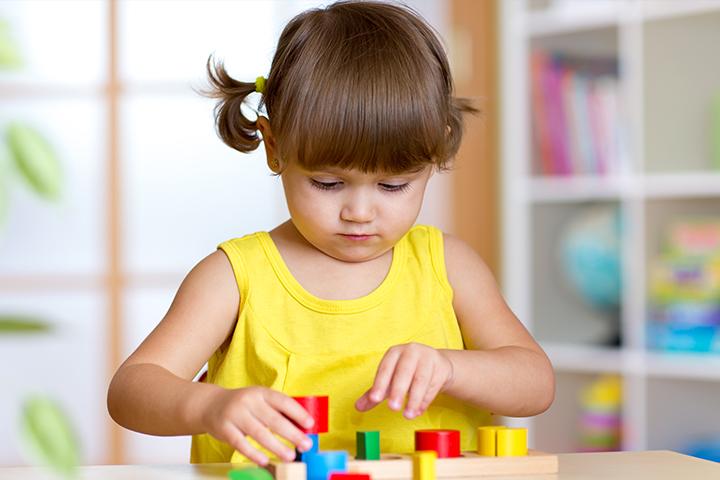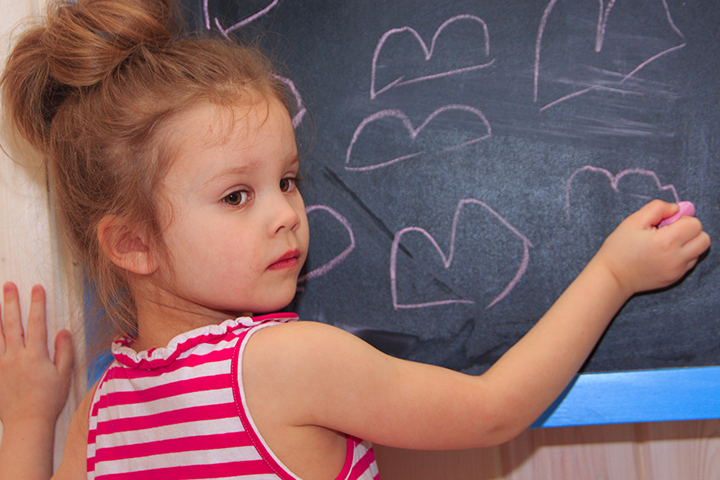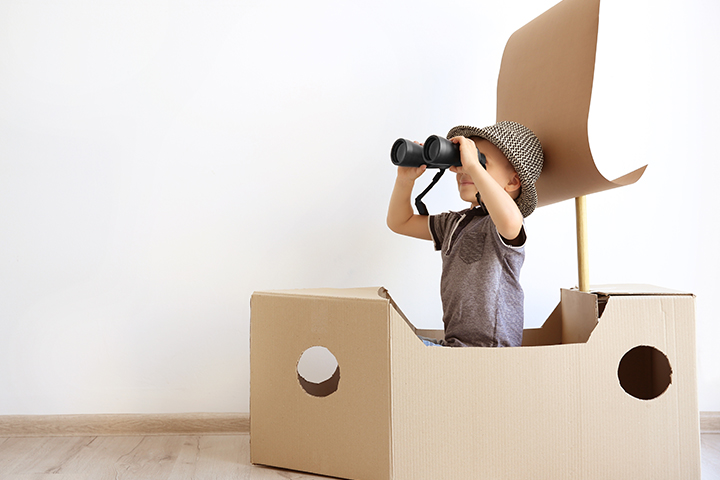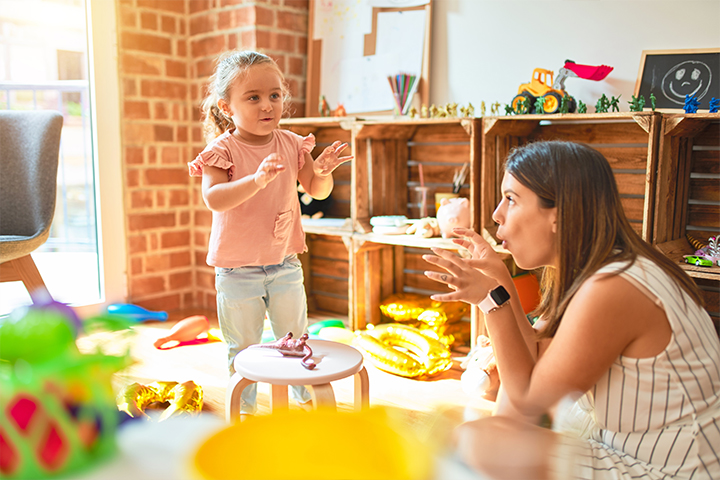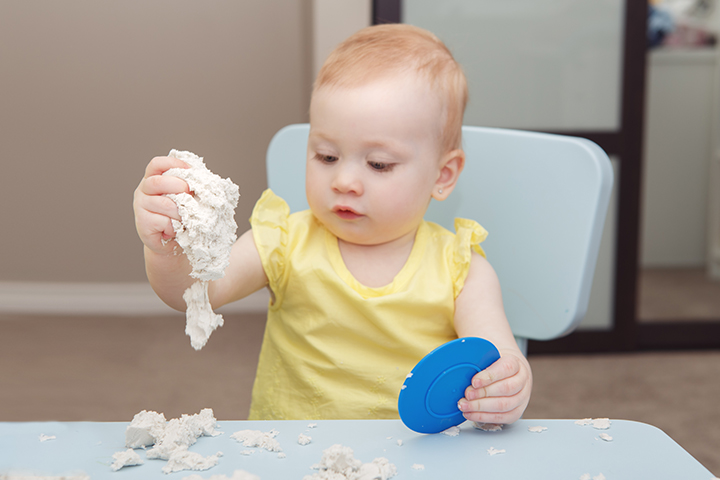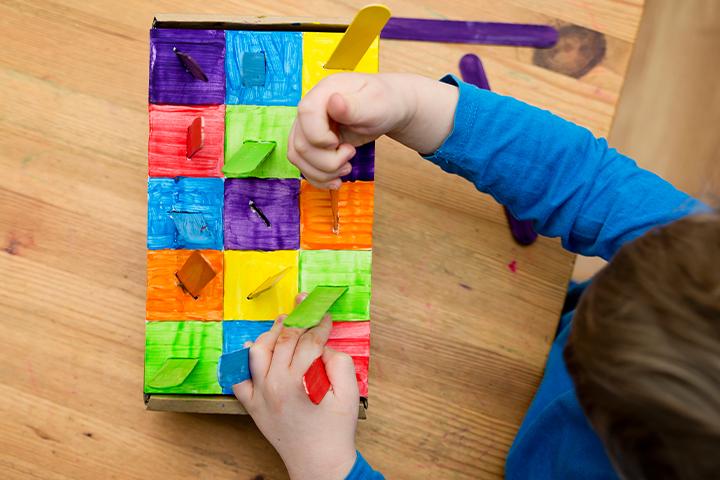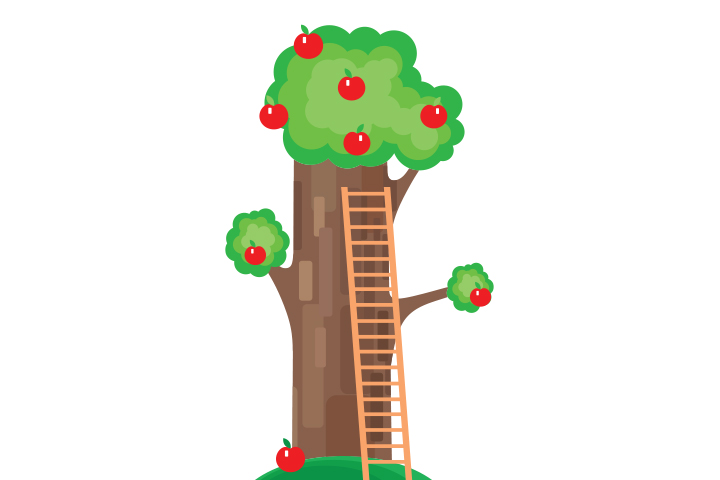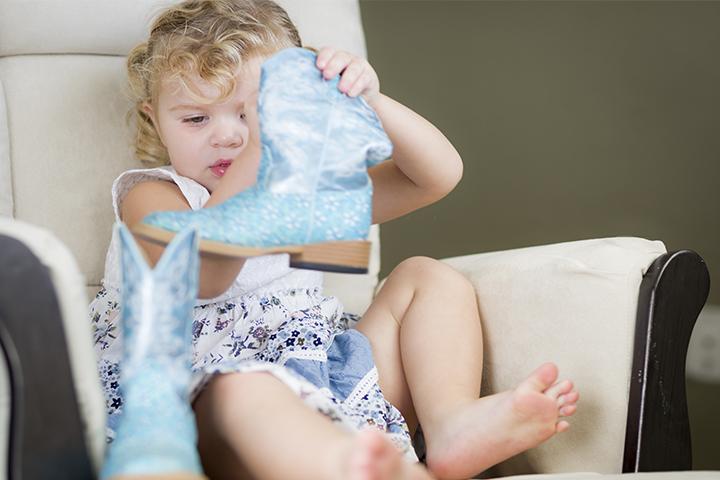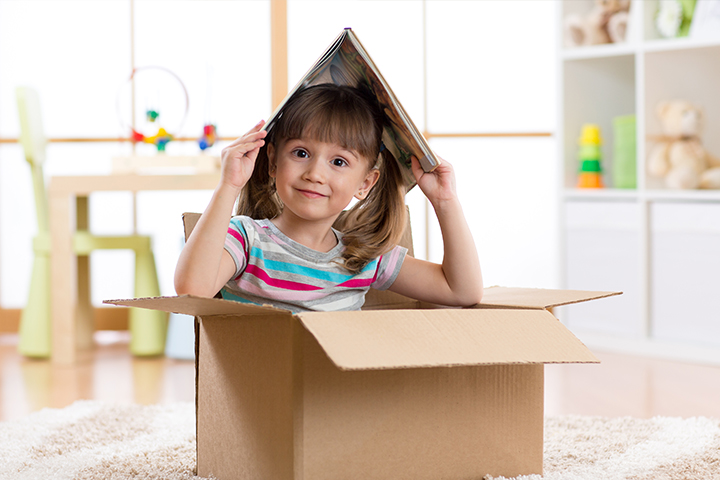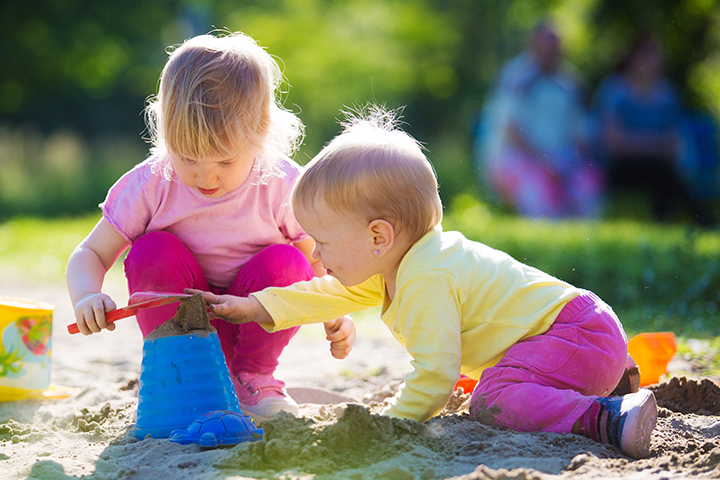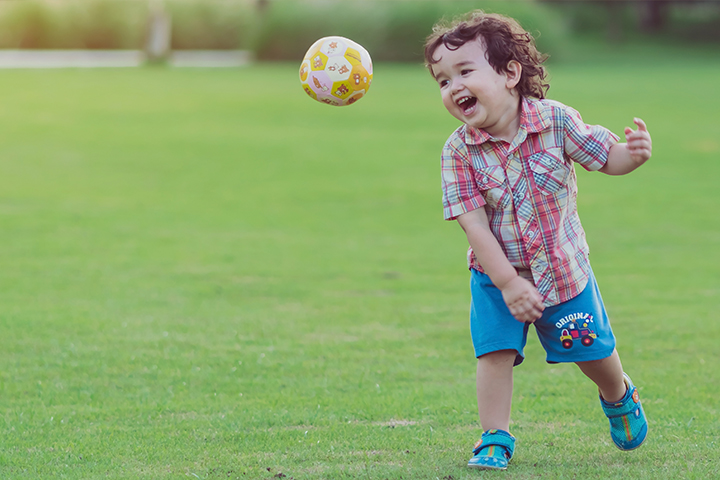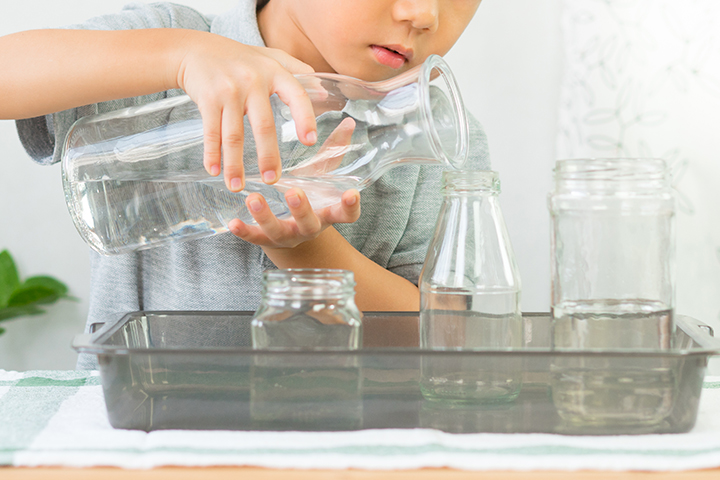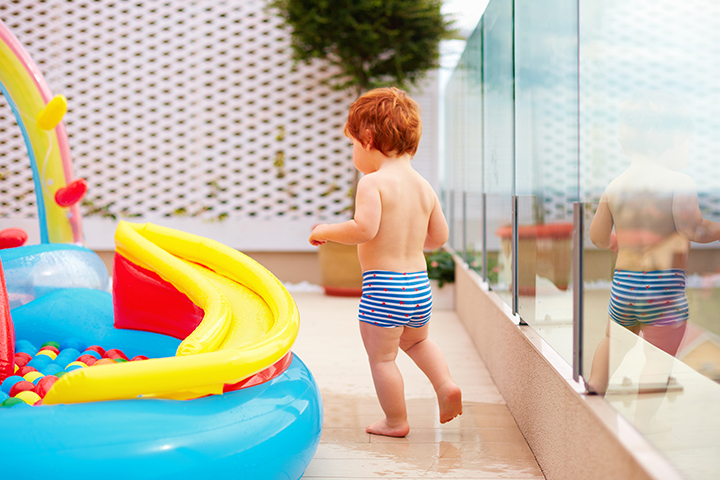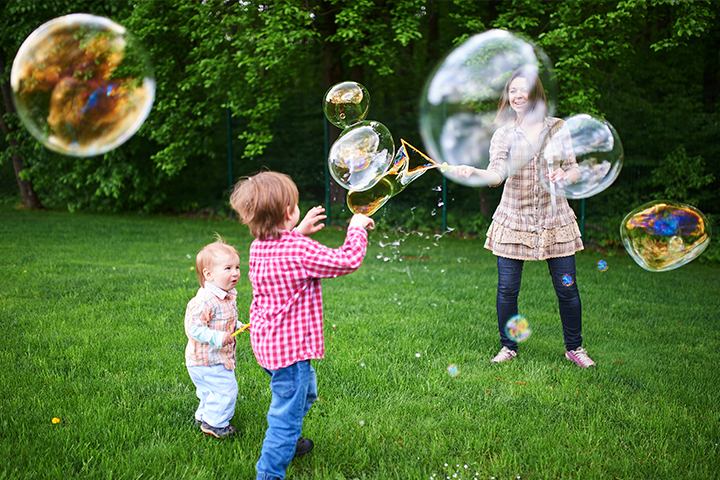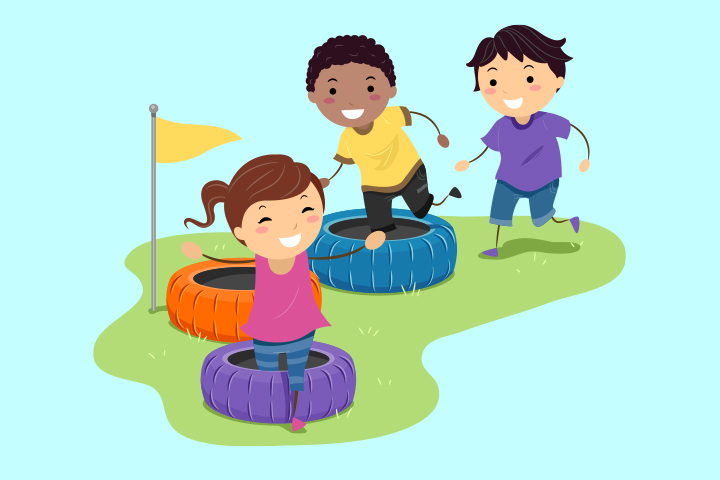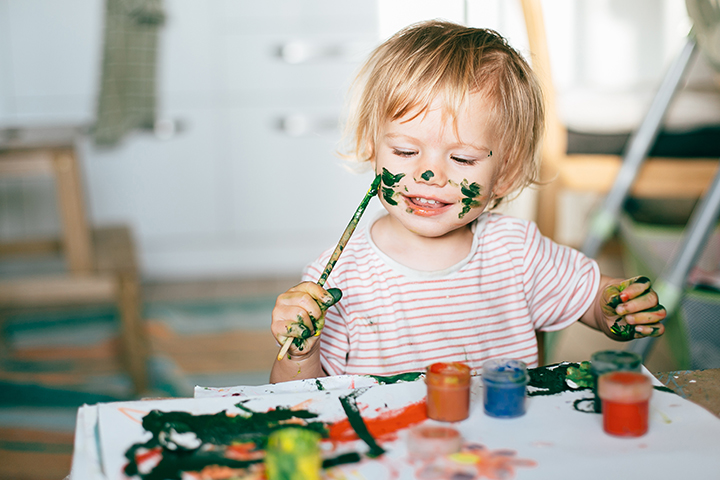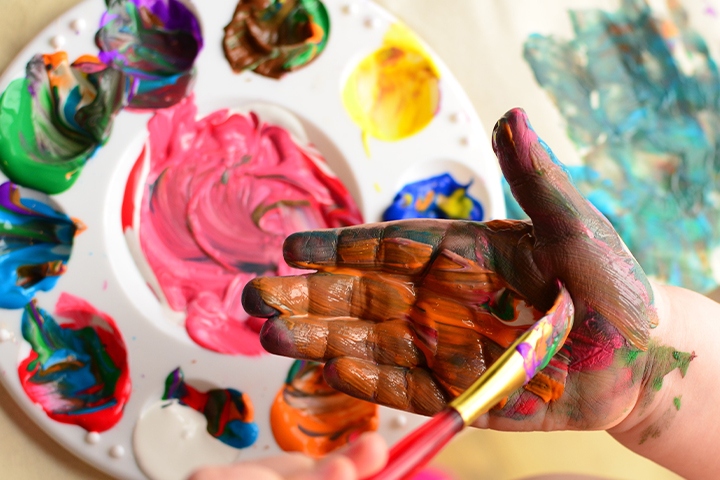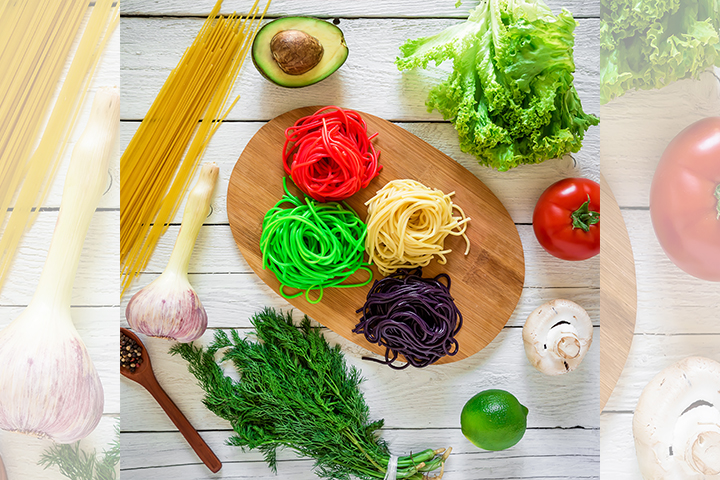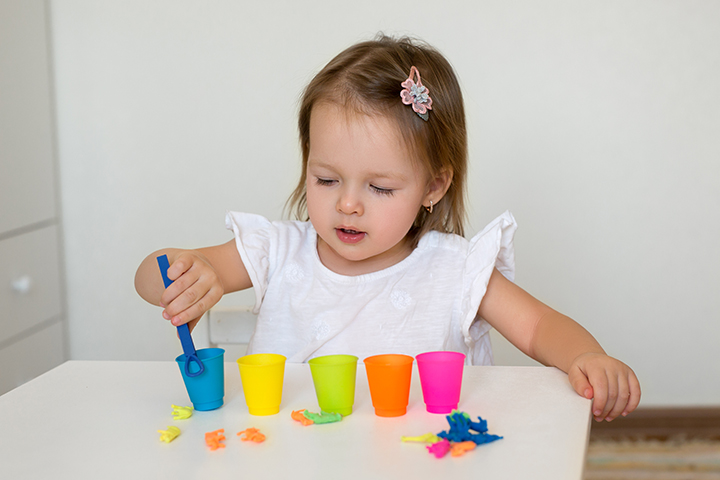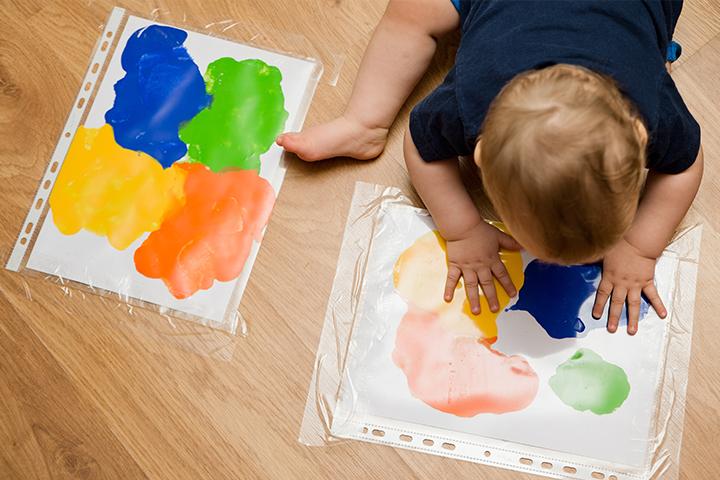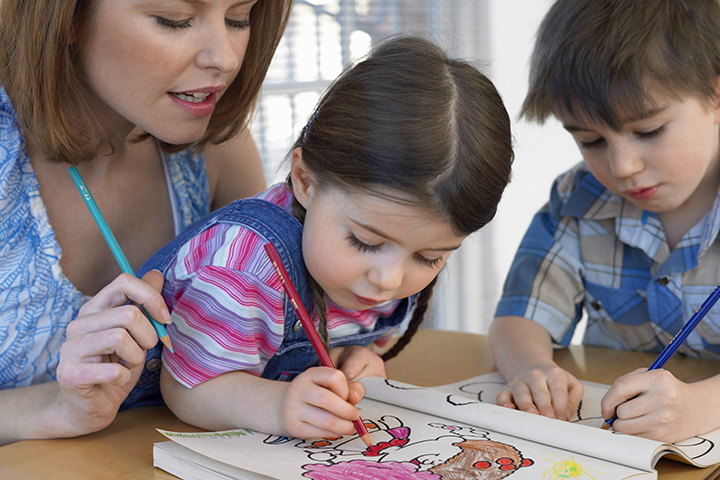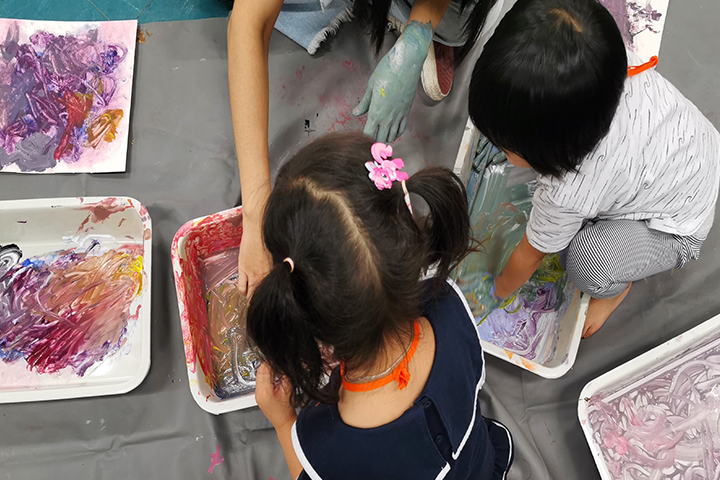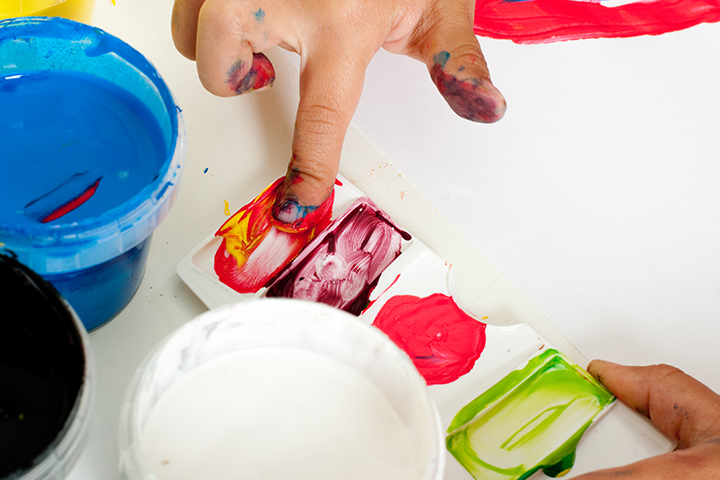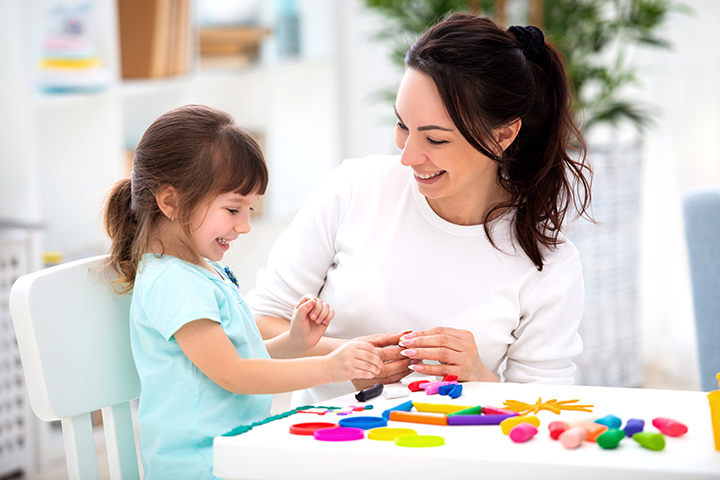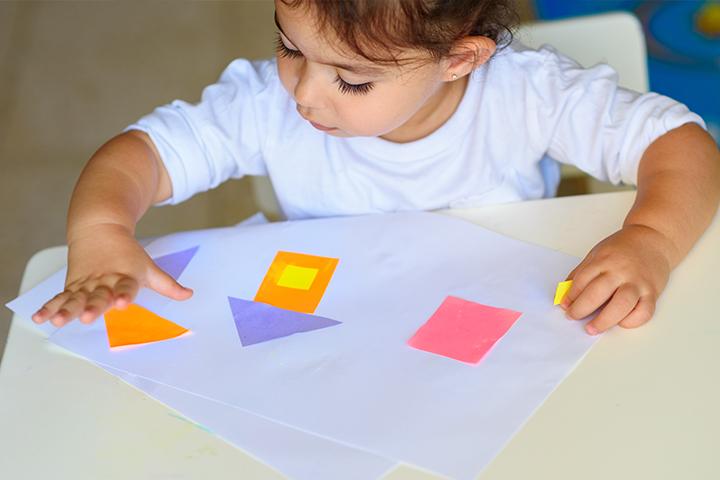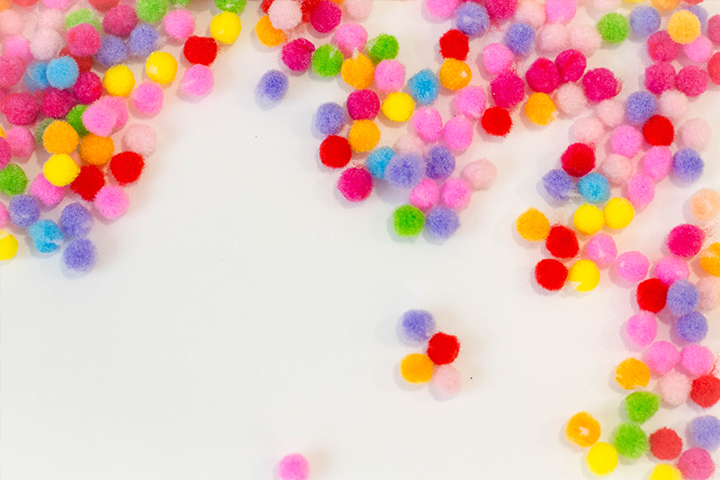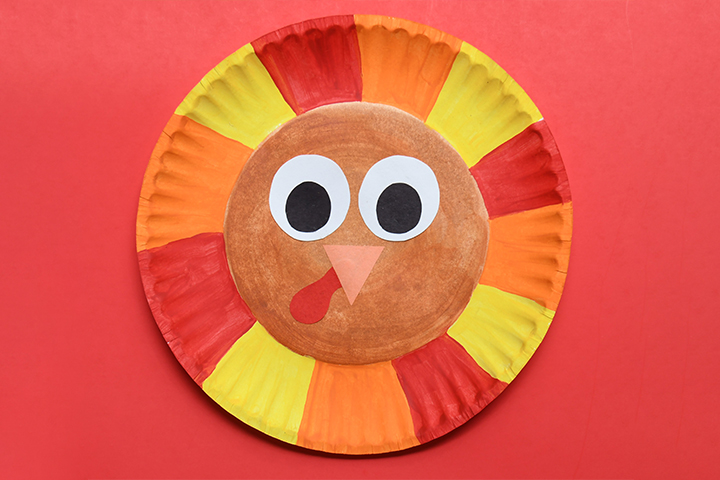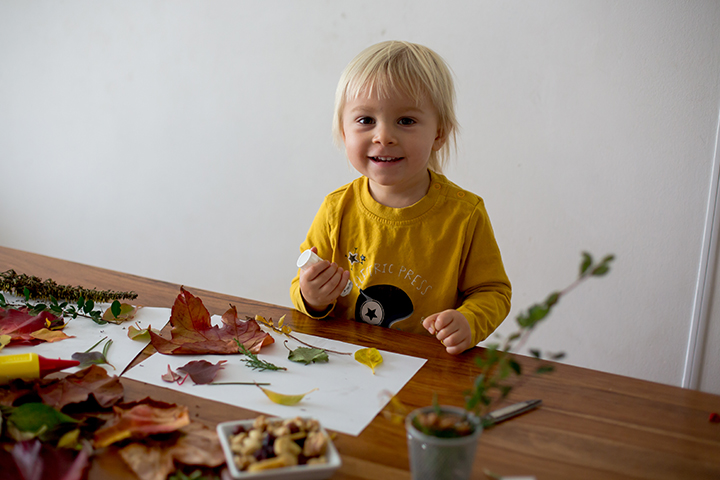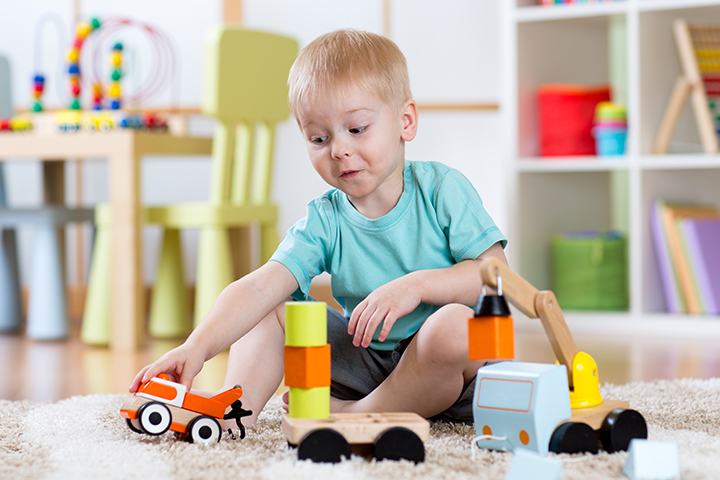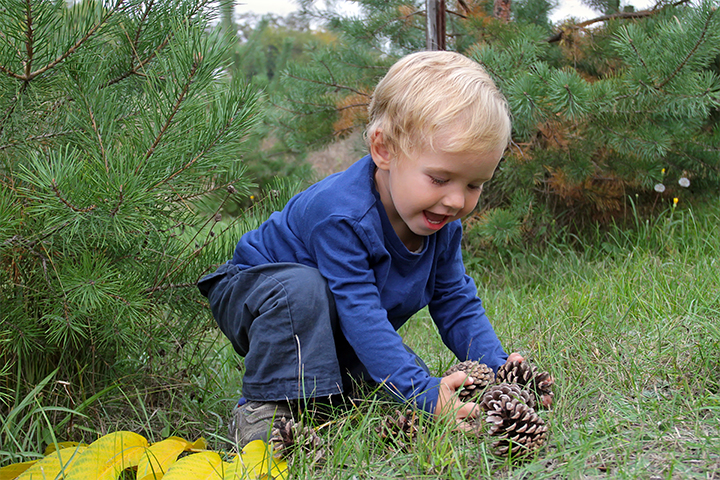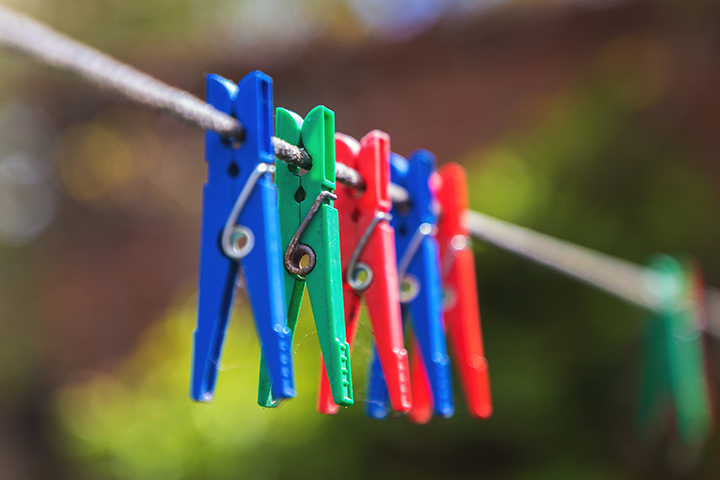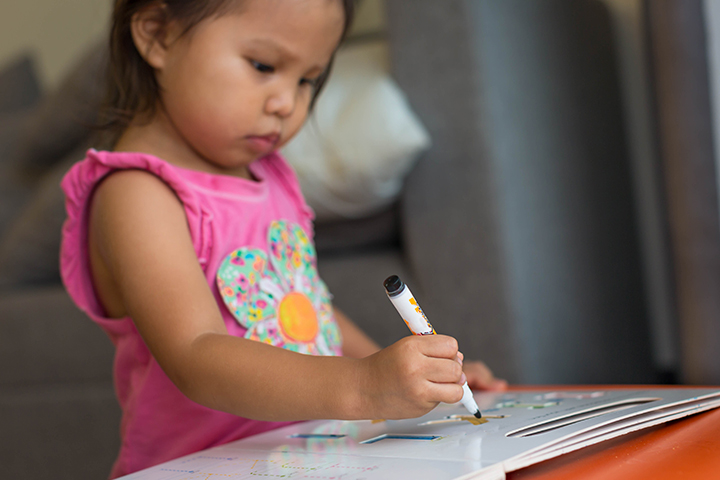Organizing activities for two-year-olds may seem challenging. But, fret not! Children love playing new games, and as they grow up, they become more curious to explore the new surroundings around them. Therefore, parents can figure out various engaging activities that are fun and informative. This also helps them develop cognitive skills at a young age (1).
When you expose your child to different indoor and outdoor games and activities, it will help create a perfect playing and learning experience. But if you are unsure what activities to introduce to your two-year-old child, this post can help you.
How Can Activities Support A Toddler’s Development?
Imparting education to a two-year-old is not a difficult task. By altering their play activities, you can introduce them to the world of learning little by little. Here are a few benefits that your toddlers can reap through different activities (2):
- Imparts problem-solving skills
- Teaches them patience and perseverance
- Helps them recognize and differentiate things around them
- Promotes creativity
- Improves motor skillsiXAn ability to move and control various body parts, especially hands, legs, and fingers.
40+ Activities For Two-Year-Olds
Here are fun and educational activities that can keep your child engaged and explore them to new things.
Educational Activities
1. Can it sink?
The fun bath-time activity boosts reasoning skills among children.
How to play?
- Fill up their bathtub or a bucket with water.
- Put toys of varied weights in the water.
- Let your child observe the toys sinking or floating.
- Later, you can test your child by asking about different objects—if they float or sink.
- You can also narrate some stories to your two-year-old while indulging in this water play to bolster their interest in storytelling.
What does it teach?
- Improves their cognitive and reasoning skills
- Gives them a peek into the world of science
2. Match the pair
It is an activity that is fun, educating, and not as complex as it seems.
How to play?
- Pick a pair of toys or pictures from different categories. These can be animals, vegetables, fruits, or even a few pieces of Legos.
- Separate the pairs by putting them in two baskets or scatter them in the room.
- Ask your child to identify the items belonging to the same category and put them together.
- Give them a high-five or chocolate as a reward.
What does it teach?
- Improves hand-eye coordinationiXAn important cognitive skill of performing movements with hands while being guided by the eyes.
- Exercises their cognitive skillsiXAll the skills that the brain possess like memory, reasoning, reading, learning, reasoning and paying attention.
3. Puzzle time
Introduce your child to the world of puzzles with this easy-to-solve DIY activity.
How to play?
- Draw a picture on cardboard and color it.
- Cut the cardboard once vertically and twice or thrice horizontally to get square or rectangular puzzle pieces.
- Shuffle the pieces and ask your child to arrange them.
- You could also make a reference picture to help your child.
- Do not make the shapes too complicated.
- Keep the number of pieces minimal in the beginning and increase as per your child’s convenience.
What does it teach?
- Teaches the concept of ‘whole’ and ‘fraction’
- Improves their recognition, patience, and goal-setting skillsiXThis could be inculcated as a method of learning where the motivation is maintained by setting a goal and striving toward it.
4. Color quest
This is one of the memory games similar to matching the pair but includes colors.
How to play?
- Use toys or items of the same color. You can use Legos, cars, or color blocks.
- Leave the pile to them and ask them to segregate the items based on colors.
What does it teach?
- Helps form the link between words and visual clues
- Improves cognitive and recognition skills
5. Color balls
It is a fun-filled color-related activity for your child.
How to play?
- Give your child different soft color balls and let them toss them around as per their will.
- You can teach them to catch a ball and ask them to throw a particular color ball.
What does it teach?
- Improves their motor skills
- Helps them identify colors
- Improves hand-eye coordination
6. Count ‘em all
The best part of the activity is that you can use anything you can find around the house.
How to play?
- Put the items in a row and count them aloud by pointing them.
- Let your child repeat after you.
- You can increase the count slowly.
What does it teach?
- Introduces them to the world of numbers
- Improves counting and cognitive skills
7. Draw that rhyme
The entertaining activity can be played while singing your little one’s favorite rhymes.
How to play?
- Pick their favorite rhyme.
- Show them books or pictures related to the rhyme. For example, you can show them cartoon pictures of a bus for the rhyme, “The Wheels On A Bus.”
- Later, draw the picture and show them how it’s done.
- After a few days, give them a piece of paper and crayons and let their imagination run while you sing the rhyme.
- Eventually, you can go with different rhymes during their playtime.
What does it teach?
- Improves their recognition and concentration skills
- Enhances hand-eye coordination
Indoor Activities
8. Toy hunt
It is a fun alternative to the hide and seek activity to keep your child excited.
How to play?
- Hide their toys and let them search. Do make sure to intimate them before hiding their toys.
- You may even give them cues as they hunt for their toys.
What does it teach?
- Improves their mobility, coordination, and imaginative skills
- Builds confidence and teamwork when played with others
- Encourages to think and comprehend
9. Charades
A simple activity that lets your child use their creative mind.
How to play?
- Say a word out loud and let your child enact it.
- Start with simple and basic words such as ‘eat’ and ‘sleep,’ and proceed with more challenging words.
- You can also teach them opposite words in a fun way.
What does it teach?
- Improves vocabulary
- Sparks creative thinking
10. Touch and feel
It is an easy and fun activity for your toddler.
How to play?
- Place a few items of different textures in front of your child.
- You could use a rock, a few pebbles, dough, or slime—anything you can find around the house.
- Let them observe each of them.
- You can also try this technique with temperatures within their bearing capacities.
What does it teach?
- Builds vocabulary
- Improves sensory skills
11. Sorting game
Sorting is a fun way to keep your child engaged.
How to play?
- You can opt for sorting boxes available in the market or make one yourself. For a DIY sorting box, take a container with a lid and make holes of varied sizes.
- Give your child smaller items of different sizes and ask them to put them into the container.
- You can demonstrate how it’s done in the beginning.
- Leave them with the container and the objects to their calculations.
What does it teach?
- Strengthens hand-eye coordination
- Improves problem-solving and motor skills
Jennifer Bly, a mother of two and author, emphasizes the value of everyday activities as learning opportunities for children. She explains, “A simple activity such as putting the dishes away is a fabulous opportunity to teach skills such as sorting and classification. I love watching my 2-year-old put the cutlery into the cutlery tray, and I am amazed at how quickly she mastered the skill of sorting the cutlery into their proper place (i).”
12. Up the ladder
It is a child-friendly, uncomplicated version of snakes and ladders.
How to play?
- Draw a ladder placed alongside a building or a tree on a piece of paper.
- Pick your child’s favorite miniature toys and ask them to make them climb the ladder.
- You can dictate simple instructions such as stop, start, top, and bottom.
What does it teach?
- Improves vocabulary and hand-eye coordination
- Helps to teach directions
13. Dress up
It is a fun way to boost creativity.
How to play?
- Place a pile of clothes in front of your child.
- Let their creativity run wild while they dress up.
- You may join them too as they make themselves a crown out of their trousers.
- Once ready, you two can play the music and indulge in a fun dancing session to spend quality time together.
What does it teach?
- Improves their motor skills
- Stretches their imagination
14. Travel diaries
It is an engaging indoor world tour activity for children to enjoy.
How to play?
- Use any item around the house that can accommodate your child. Maybe a blanket, towel, cardboard box, or their mini-cars.
- Let them travel the world.
- You can tag along and enjoy a house vacation if you wish to.
- Alternatively, you can name the rooms of the house with places they’re familiar with. For example, the kitchen can be London, and the bedroom Paris. Maybe their grandparents’ house or even to a jungle or park for that matter.
- Just say the name of the place and run around the house for an adventure.
What does it teach?
- Expands their imaginary skills
- Teaches pretend play
Outdoor Activities
15. Sandbox
The activity keeps your children occupied for hours.
How to play?
- Create a box and fill it up with sand.
- You can also add pebbles, buckets, shovels, and a few of their favorite toys.
What does it teach?
- Strengthens fingers and hands
- Improves coordination
16. Gardening
It is a habit that can be started young.
How to play?
- In the beginning, keep the activity simple.
- You can ask your child to plant a seed.
- Leave the watering task to them, even if it includes a mini-mug pour from time to time.
- Watch their interest in gardening develop as the plants grow.
- Later on, you can teach them to shovel and pick fruits and flowers.
What does it teach?
- Teaches them about cause and effect theory
- Makes them responsible
- An early start to nutrition education
17. Ball games
Pave a path for their sports career by letting them play ball games.
How to play?
- All you need is a softball and any game of your choice.
- Start with simple ball-throws and let them master the act of catching.
- Then you can teach them to toss or kick the ball.
- Ultimately, include bats and see their skills
What does it teach?
- Improves hand-eye coordination
- Helps muscles development
18. Pour it all!
It is a fun activity but can be super fun for the children.
How to play?
- Give them a few mugs and a pouring medium of your choice. It could be water, sand, or even some rice.
- Let them pour it from one jug to another.
What does it teach?
- Develops their motor skills and hand-eye coordination
19. Simon says
It is a classic game that says it all!
How to play?
- Name an activity after stating the words “Simon says.” For example, Simon says touch a tree or Simon says touch red color.
- Let your child run around to complete Simon’s task.
What does it teach?
- Improves their concentration and recognition skills
20. Bubble pop
It is a simple yet engaging game that your toddler would love to play.
How to play?
- Fill up a tray with water and some dishwashing liquid
- Use a wire loop to make blow bubbles. Let your child run around popping them.
- Or you can also let them wave or blow the loop to make bubbles.
What does it teach?
- Develops motor skills and strengthens muscles
- Makes them curious about the wonders of science
21. Obstacle course
The obstacle course is a child-friendly game for adventurous play.
How to play?
- Select an area that is safe for your child to jump around.
- Clean it and remove any rocks or pebbles that may hurt them.
- Draw a path and place several obstacles along.
- The path can be as complicated as you wish to. But make it simple in the beginning.
- Ask your child to reach the other end of the path.
- You can also include other mini tasks such as kicking and hopping.
What does it teach?
- Helps them master their motor skills
- Teaches them the act of balancing
Fun And Coloring Activities
22. Paint the sheet
The simple painting activity can let your child’s creative juices flowing.
How to play?
- You’ll need a large sheet of paper, water paints, and a coloring tool of your choice.
- Give them brushes, sponges, or cookie cutters to make the activity
- Leave your child with the paints and let them fill up the sheet.
What does it teach?
- Stimulates creativity
- Improves coordination and concentration skills
23. Mix them up
It is an activity where learning gets fun in few seconds.
How to play?
- Place a few cups of water and add food colors to them.
- Let your child mix them up and discover the world of color combinations.
What does it teach?
- Stretches their observation capacity
- They may start using mathematical reasoning while mixing colors proportionally
24. Rainbow food
It is an activity that can be used to teach your toddler good eating habits.
How to play?
- Add food colors to their food.
- It may be rainbow pasta, rice, or even smoothies.
- Make sure to add colors in front of your child.
- Let them enjoy the delicacy.
What does it teach?
- Teaches them mathematical reasoning and healthy eating habits
25. Color sorting
The color sorting activity is designed to make learning fun.
How to play?
- Take a sheet and draw circles of different colors.
- You can also take several cups and color them on the outside.
- Ask your child to place objects of similar colors in the circle or inside the cups.
What does it teach?
- Improves visual perception, identification, and thinking skills
26. No-mess painting
It is a fun activity, and you need not worry about the mess.
How to play?
- Take a sealable plastic cover and place a piece of paper
- Fill it up with a few drops of paint.
- Remove the air and seal the bag tight.
- Let your child push the paint in any direction they want.
- In the end, you can remove and dry the paper.
What does it teach?
- Stimulates creativity and improves hand-eye coordination
27. Coloring book
A classic approach to coloring will help your child learn about colors and drawing skills from a young age.
How to play?
- Get a few coloring books or download a few coloring printables online.
- You can buy crayons, sketches or even paints. Make sure that they are child-friendly without chemicals.
- Try to help them color inside the margins. It is okay if they move outside the margins.
What does it teach?
- Improves finger grip, eye-hand coordination, and concentration skills
28. Paint them all
It is an activity for children who like messy painting.
How to play?
- Take a plastic tub outdoors.
- Give your little one a few brushes and let the painting begin.
- You could also attach the paper to the walls and let them paint on it.
- They could also paint bubble wraps, Legos, or whatever you find suitable around the house.
What does it teach?
- Improves hand-eye coordination
- Introduces them to the concept of colors
Art And Craft Activities
29. Color mix
It is a fun way to teach children about colors and mixing.
How to play?
- On paper, add colors or paints of your choice.
- Mix them and show how the colors
- Tell them what each color is called.
- You can begin with primary
What does it teach?
- Improves color recognition and vocabulary
30. Playdough
Playing with the dough is simple and engaging. You may even ask your child to mix colors in the dough.
How to play?
- Get your child to play dough and let them take the lead.
- You can show them how to mix colors and demonstrate a few shapes.
What does it teach?
- Develops muscles in fingers and hands
- Improves motor skills
31. Glue art
It is a simple introduction to the world of crafts to make your toddler’s time enjoyable.
How to play?
- Give them some glue and few paper
- Help them in pasting different coloring pages together.
- You can also draw shapes of different colors and ask them to paste color paper-cuts into those shapes.
What does it teach?
- Improves hand-eye coordination and motor skills
32. Zig-zag
It is not as complex as it seems and lets your child scribble anything they want to.
How to play?
- Draw zig-zag lines on a piece of cardboard or paper.
- Take a few large size buttons and toxic-free glue.
- Ask your child to stick the buttons or paper along the lines.
What does it teach?
- Improves motor skills and hand-eye coordination
33. Cotton ball craft
Learning becomes fun with this activity.
How to play?
- Draw the outlines of animals, trees, fruits, or vegetables in different colors on paper.
- In a few cups, pour water and add food colors.
- Help your child dip cotton balls in the water.
- Let the cotton balls dry, and then help them sort the balls in the same colored shapes.
What does it teach?
- Improves hand-eye coordination and manual dexterity
34. Paper plate crafts
This easy and fun animal intimation activity for the tiny tots can help them enjoy fun learning time.
How to play?
- Decide the animal you like to make.
- Draw the outlines of the individual parts on different paper plates. For example, if you plan to craft a bird, you can draw the face on one plate and its beaks on the other.
- Color the parts and assemble them with glue.
- You can also use accessories such as buttons, artificial feathers, googly eyes, and much more for decorations.
What does it teach?
- Stimulates creativity
- Improves hand-eye coordination
35. Nature collage
It is a beautiful activity that lets your children fall in love with nature.
How to play?
- Collect anything from around the house. You can get leaves, twigs, flower petals, buttons, and paper
- Draw random lines on a piece of paper.
- Help your child stick similar category items in each zone.
What does it teach?
- Teaches them the concept of patience
Developmental Activities
36. Object tracking
It is an activity that can be their first step towards art.
How to play?
- Take a paper and place any objects on it. Maybe a few Legos, straws, or even your hand.
- Give your child several colored pencils and let them trace along with the objects.
What does it teach?
- Improves motor skills and manual dexterity
- Teaches patience
37. Indoor car race
The activity is a mix of adventure and patience.
How to play?
- Create a driveway.
- Add obstacles through the way. You can place any object you find around the house—a box, a few more cars, or few Legos.
- Let your child run their trucks or cars through the driveways without touching any obstacle on the side.
What does it teach?
- Improves hand-eye coordination and concentration
38. Nature hunt
Here’s an activity you can do the next time you’re outside with your child.
How to play?
- Name an item and ask them to hunt for it.
- They can collect flowers, twigs, leaves, pine cones, and maybe shells.
What does it teach?
- Improves observational and recognition skills
39. Blocks
It is an introductory game to the world of words and numbers.
How to play?
- You can use any building blocks that have letters or numbers on them.
- Help your child stack them as you say out loud what’s on them.
- Eventually, you can ask them to arrange the letters and numbers in order.
What does it teach?
- Improves dexterity, hand-eye coordination, and motor skills
40. It’s counting time
The activity can be played anywhere, while on a road trip or when the power goes off.
How to play?
- Ask your child to count any available item.
- Bowls, carrots, or clips—it can be anything you find around the house. Use it as an opportunity to teach them numbers.
What does it teach?
- Builds math skills
41. Tracing alphabet and numbers
It is an activity that sets the course to learning.
How to play?
- On a paper, dot letters and numbers. You can also download free printables online.
- Give them color pencils and help them trace along with the dots.
- Make sure to speak out the letters or numbers while they trace.
- You can also use this method to teach shapes and patterns.
What does it teach?
- Improves fine motor skills
42. Arrange in order
It is an activity designed to teach sizes.
How to play?
- Take a few straws and cut them into varied sizes. You can also use blocks or Legos of various sizes for this activity.
- Mix them up and let your child arrange according to height.
- You can also use leaves, twigs, petals, or any other object for this activity.
What does it teach?
- Improves observational skills and recognition skills
43. Balloon pop
Balloon pop is a vibrant and engaging activity for 2-year-olds to learn colors, sounds, and coordination. This game is a fun learning activity for children to play and learn simultaneously.
How to play?
- Inflate several balloons in different colors and sizes.
- Securely tape the balloons at a low height on a wall or let them float with strings attached.
- Encourage your child to pop the balloons by gently pressing or tapping them.
- As each balloon pops, cheer and name the color loudly.
- Repeat the names of the colors with each pop to reinforce learning.
What does it teach?
- Color recognition
- Motor skills
- Auditory stimulation
Channel the energy of your two-year-old in the right direction with the help of these learning activities for 2-year-olds. Children are at their developing stage at this age, so these activities will help you combine learning and fun while keeping your children engaged in something productive. These will not only develop their motor and cognitive skills but also teach them to be patient. With a little bit of help, you will see your child reach their developmental milestones with great levels of creativity and perseverance.
Key Pointers
- Activities such as Count ’Em All or Counting Time improve toddlers’ mathematical, reasoning, and analytical skills.
- To improve their motor skills, they could trace alphabets and numbers or engage in other object tracking activities.
- Art and craft activities with playdough or nature collages stimulate creativity while teaching color combinations.
Keeping a toddler engaged in an activity for long is a real challenge for any parent. Here are some fun and easy activities to keep your 1-2 year old entertained at home!

